A George IV silver centrepiece, John Bridge for Rundell, Bridge & Rundell, London, 1823, probably designed under the superintendence of John Flaxman
modelled as a large shell supported by a frothing pillar of water, the triform base guarded at each of its three points by hippocamps on a crashing wave base, the feet composed of turtles, coral and shells, the bowl engraved with two coats-of-armswidth 14 1⁄2in.; weight 284 oz.; 37 cm.; 8,848 gr.__________________________________________________________________________
Centre de table en argent par John Bridge, Londres, 1823, probablement d'après un dessin de John Flaxman
en forme de grand coquillage soutenu par une colonne d'eau écumante, la base triangulaire ornée d'hippocampes sur une vague, les pieds en forme de tortues, de corail et de coquillages, gravé de deux armoirieswidth 14 1⁄2in.; weight 284 oz.; 37 cm.; 8,848 gr.Condition reportWonderful modelling, excellent hallmarks, engraving and overall good condition.
"In response to your inquiry, we are pleased to provide you with a general report of the condition of the property described above. Since we are not professional conservators or restorers, we urge you to consult with a restorer or conservator of your choice who will be better able to provide a detailed, professional report. Prospective buyers should inspect each lot to satisfy themselves as to condition and must understand that any statement made by Sotheby's is merely a subjective, qualified opinion. Prospective buyers should also refer to any Important Notices regarding this sale, which are printed in the Sale Catalogue.NOTWITHSTANDING THIS REPORT OR ANY DISCUSSIONS CONCERNING A LOT, ALL LOTS ARE OFFERED AND SOLD AS IS" IN ACCORDANCE WITH THE CONDITIONS OF BUSINESS PRINTED IN THE SALE CATALOGUE."ProvenanceRobert Ferguson (1769-1840), Raith, Fife and Portman Square, LondonKoopman Rare Art, London, 2013____________________________________________
Robert Ferguson (1769-1840), Raith, Fife and Portman Square, LondresKoopman Rare Art, Londres, 2013LiteratureE. Alfred Jones The Gold and Silver of Windsor Castle, Arden Press, Letchworth, 1911, pl. LXXXI, p.160
Shirley Bury, 'The lengthening shadow of Rundell's,' pt 2, 'The substance and growth of the Flaxman tradition,' The Connoisseur, March 1966, p.152
Charles Oman, 'A Problem of Artistic Responsibility: The Firm of Rundell, Bridge & Rundell,' Apollo, March 1966, p. 181
David Bindman, editor, John Flaxman R.A., Royal Academy or Arts, Thames & Hudson, 1979, pp.142 and 148
Christopher Hartop, Royal Goldsmiths: The Art of Rundell & Bridge 1797-1843, John Adamson Cambridge for Koopman Rare Art, London, 2005, pp. 87 and 95Catalogue noteRobert Ferguson of Raith
The first arms are those of Ferguson of Raith, Fife, with Hamilton-Nisbet in pretence for Robert Ferguson, eldest son of William Ferguson (formerly Berry) of Raith and his wife, Jean, daughter of Ronald Craufurd of Restairig, Edinburgh. He was born on 8 September 1769 and educated at Edinburgh and Glasgow University.
The second arms are those of Hamilton-Nisbet in a lozenge.
‘As a young man, Mr Ferguson was beloved by the neighbourhood for his frank and generous spirit, and admired for his elegant and manly beauty. His earlier studies were directed to the bar; and, after qualifying in Edinburgh, he entered the Faculty of Advocates in 1791. Mr Ferguson never practiced: he acquired his legal knowledge not as a profession, but as a requisite in the education of a gentleman.
‘After acquiring all the education that is usually afforded to gentlemen of his rank in this country, Mr Ferguson visited and spent many years of his life in most of the continental states. . . . Having had the misfortune, or rather we would say the good fortune, to be one of those Englishmen [sic] detained in France by the Revolutionary Government, he spent many years of his life in Paris during the career of Buonaparte, and witnessed the progress of events in that most interesting period. . . . As a linguist, Mr Ferguson wrote and spoke several European languages with equal ease and facility. . . . Mr Ferguson was partly indebted to his early friend and model [the prominent British Whig statesman] Mr [Charles James] Fox [1749-1806], for the attention he met with in France, and to him, we believe, was he indebted for his ultimate liberation. On his return to Scotland, he was returned to Parliament for the county of Fife, in 1806, and from this period we may date the commencement of Mr Ferguson’s public career. His parliamentary services have not been continuous, but he has successively been returned for the Kirkaldy Burghs, at the elections of 1831, ‘32, and ‘37. In 1835 he represented the county of East Lothian as a matter of expediency during the Peel administrator of that period.’1
Mr. Ferguson’s private interests and marriage
Mr. Ferguson was ‘a member of several learned societies; but though he does not appear to have published any scientific memoirs, he was eminent as an enthusiastic patron of science, and an encourager of knowledge of very description, Mineralogy, geology, and the fine arts were his favourite pursuits.’2
Robert Ferguson was married to Mary (d. 1855), daughter and heir of William Hamilton Nisbet (1747-1822) of Dirleton and Belhaven, Haddington, and the divorced wife of Thomas, 7th Earl of Elgin, later 11th Earl of Kincardine (1766-1841). His lordship had successfully petitioned for a divorce from his wife for her adultery with Ferguson, a scandal of the season. The matter was finally resolved at the Court of Sessions, Edinburgh on 11 March 1808 and the couple were married a little under six weeks later on 20 April.3 Ferguson was latterly Lord-Lieutenant of Fife and died at his London house, 18 Portman Square on 3 December 1840.
Rundell, Bridge & Rundell and John Flaxman
Four silver-gilt soup tureens and covers (mark of John Bridge, London, 1826) of the same design as this present centrepiece were supplied by Rundell, Bridge & Rundell to George IV as part of his Grand Service. They were designed to match the Marine Service of rococo silver made in the 1740s for Frederick, Prince of Wales. This present centrepiece, however, and another silver example of 1824 (Sotheby’s, London, 6 July 2011, lot 32) predate George IV’s tureens, suggesting that they were prototypes. The late Shirley Bury, author of the groundbreaking series of articles, ‘The Lengthening Shadow of Rundell’s,’ published in The Connoisseur during 1966, was of the view that the sculptor John Flaxman (1755-1826), who during the closing years of his life was Rundell’s art consultant, was responsible for the firm’s revival of the rococo style and use of botanical and aquatic naturalism. In part, Mrs. Bury based her opinion on an 1844 report that the colossal 8,000 ounce silver-gilt wine cooler ordered by George IV from Rundell’s in the mid 1820s and delivered after his death in 1830, was ‘modelled by Flaxman.’4 The suggestion was endorsed more recently in the catalogue issued in 2002 to accompany the Royal Treasures exhibition at the Queen’s Gallery, Buckingham Palace: ‘[Rundell’s] also drew inspiration from the sixteenth- and seventeenth- century plate: the hippocampus or seahorses which support the bowl . . . are derived from an early seventeenth century nautilus cup [by Nikolaus Schmidt (1550/55-1609) of Nuremberg], considered by Flaxman to be by Cellini, sold to George IV by Rundell’s in 1823. These revivalist styles of the 1820s were revolutionary departures after decades of classicism.’5
Notes1. The Fife Herald, Cupar, Thursday, 10 December 1840, p. 3a/b2. John Evans et al, editors, The Numismatic Chronicle, third series, vol. XI, London, 1891, p. 873. The Northampton Mercury, Northampton, Saturday, 2 April 1808, p. 14. The Illustrated London News, London, Saturday, 21 September 1844, p. 178a5. Jane Roberts, editior, Royal Treasures: A Golden Jubilee Celebration, London, 2002, p. 267
A George IV silver centrepiece, John Bridge for Rundell, Bridge & Rundell, London, 1823, probably designed under the superintendence of John Flaxman
modelled as a large shell supported by a frothing pillar of water, the triform base guarded at each of its three points by hippocamps on a crashing wave base, the feet composed of turtles, coral and shells, the bowl engraved with two coats-of-armswidth 14 1⁄2in.; weight 284 oz.; 37 cm.; 8,848 gr.__________________________________________________________________________
Centre de table en argent par John Bridge, Londres, 1823, probablement d'après un dessin de John Flaxman
en forme de grand coquillage soutenu par une colonne d'eau écumante, la base triangulaire ornée d'hippocampes sur une vague, les pieds en forme de tortues, de corail et de coquillages, gravé de deux armoirieswidth 14 1⁄2in.; weight 284 oz.; 37 cm.; 8,848 gr.Condition reportWonderful modelling, excellent hallmarks, engraving and overall good condition.
"In response to your inquiry, we are pleased to provide you with a general report of the condition of the property described above. Since we are not professional conservators or restorers, we urge you to consult with a restorer or conservator of your choice who will be better able to provide a detailed, professional report. Prospective buyers should inspect each lot to satisfy themselves as to condition and must understand that any statement made by Sotheby's is merely a subjective, qualified opinion. Prospective buyers should also refer to any Important Notices regarding this sale, which are printed in the Sale Catalogue.NOTWITHSTANDING THIS REPORT OR ANY DISCUSSIONS CONCERNING A LOT, ALL LOTS ARE OFFERED AND SOLD AS IS" IN ACCORDANCE WITH THE CONDITIONS OF BUSINESS PRINTED IN THE SALE CATALOGUE."ProvenanceRobert Ferguson (1769-1840), Raith, Fife and Portman Square, LondonKoopman Rare Art, London, 2013____________________________________________
Robert Ferguson (1769-1840), Raith, Fife and Portman Square, LondresKoopman Rare Art, Londres, 2013LiteratureE. Alfred Jones The Gold and Silver of Windsor Castle, Arden Press, Letchworth, 1911, pl. LXXXI, p.160
Shirley Bury, 'The lengthening shadow of Rundell's,' pt 2, 'The substance and growth of the Flaxman tradition,' The Connoisseur, March 1966, p.152
Charles Oman, 'A Problem of Artistic Responsibility: The Firm of Rundell, Bridge & Rundell,' Apollo, March 1966, p. 181
David Bindman, editor, John Flaxman R.A., Royal Academy or Arts, Thames & Hudson, 1979, pp.142 and 148
Christopher Hartop, Royal Goldsmiths: The Art of Rundell & Bridge 1797-1843, John Adamson Cambridge for Koopman Rare Art, London, 2005, pp. 87 and 95Catalogue noteRobert Ferguson of Raith
The first arms are those of Ferguson of Raith, Fife, with Hamilton-Nisbet in pretence for Robert Ferguson, eldest son of William Ferguson (formerly Berry) of Raith and his wife, Jean, daughter of Ronald Craufurd of Restairig, Edinburgh. He was born on 8 September 1769 and educated at Edinburgh and Glasgow University.
The second arms are those of Hamilton-Nisbet in a lozenge.
‘As a young man, Mr Ferguson was beloved by the neighbourhood for his frank and generous spirit, and admired for his elegant and manly beauty. His earlier studies were directed to the bar; and, after qualifying in Edinburgh, he entered the Faculty of Advocates in 1791. Mr Ferguson never practiced: he acquired his legal knowledge not as a profession, but as a requisite in the education of a gentleman.
‘After acquiring all the education that is usually afforded to gentlemen of his rank in this country, Mr Ferguson visited and spent many years of his life in most of the continental states. . . . Having had the misfortune, or rather we would say the good fortune, to be one of those Englishmen [sic] detained in France by the Revolutionary Government, he spent many years of his life in Paris during the career of Buonaparte, and witnessed the progress of events in that most interesting period. . . . As a linguist, Mr Ferguson wrote and spoke several European languages with equal ease and facility. . . . Mr Ferguson was partly indebted to his early friend and model [the prominent British Whig statesman] Mr [Charles James] Fox [1749-1806], for the attention he met with in France, and to him, we believe, was he indebted for his ultimate liberation. On his return to Scotland, he was returned to Parliament for the county of Fife, in 1806, and from this period we may date the commencement of Mr Ferguson’s public career. His parliamentary services have not been continuous, but he has successively been returned for the Kirkaldy Burghs, at the elections of 1831, ‘32, and ‘37. In 1835 he represented the county of East Lothian as a matter of expediency during the Peel administrator of that period.’1
Mr. Ferguson’s private interests and marriage
Mr. Ferguson was ‘a member of several learned societies; but though he does not appear to have published any scientific memoirs, he was eminent as an enthusiastic patron of science, and an encourager of knowledge of very description, Mineralogy, geology, and the fine arts were his favourite pursuits.’2
Robert Ferguson was married to Mary (d. 1855), daughter and heir of William Hamilton Nisbet (1747-1822) of Dirleton and Belhaven, Haddington, and the divorced wife of Thomas, 7th Earl of Elgin, later 11th Earl of Kincardine (1766-1841). His lordship had successfully petitioned for a divorce from his wife for her adultery with Ferguson, a scandal of the season. The matter was finally resolved at the Court of Sessions, Edinburgh on 11 March 1808 and the couple were married a little under six weeks later on 20 April.3 Ferguson was latterly Lord-Lieutenant of Fife and died at his London house, 18 Portman Square on 3 December 1840.
Rundell, Bridge & Rundell and John Flaxman
Four silver-gilt soup tureens and covers (mark of John Bridge, London, 1826) of the same design as this present centrepiece were supplied by Rundell, Bridge & Rundell to George IV as part of his Grand Service. They were designed to match the Marine Service of rococo silver made in the 1740s for Frederick, Prince of Wales. This present centrepiece, however, and another silver example of 1824 (Sotheby’s, London, 6 July 2011, lot 32) predate George IV’s tureens, suggesting that they were prototypes. The late Shirley Bury, author of the groundbreaking series of articles, ‘The Lengthening Shadow of Rundell’s,’ published in The Connoisseur during 1966, was of the view that the sculptor John Flaxman (1755-1826), who during the closing years of his life was Rundell’s art consultant, was responsible for the firm’s revival of the rococo style and use of botanical and aquatic naturalism. In part, Mrs. Bury based her opinion on an 1844 report that the colossal 8,000 ounce silver-gilt wine cooler ordered by George IV from Rundell’s in the mid 1820s and delivered after his death in 1830, was ‘modelled by Flaxman.’4 The suggestion was endorsed more recently in the catalogue issued in 2002 to accompany the Royal Treasures exhibition at the Queen’s Gallery, Buckingham Palace: ‘[Rundell’s] also drew inspiration from the sixteenth- and seventeenth- century plate: the hippocampus or seahorses which support the bowl . . . are derived from an early seventeenth century nautilus cup [by Nikolaus Schmidt (1550/55-1609) of Nuremberg], considered by Flaxman to be by Cellini, sold to George IV by Rundell’s in 1823. These revivalist styles of the 1820s were revolutionary departures after decades of classicism.’5
Notes1. The Fife Herald, Cupar, Thursday, 10 December 1840, p. 3a/b2. John Evans et al, editors, The Numismatic Chronicle, third series, vol. XI, London, 1891, p. 873. The Northampton Mercury, Northampton, Saturday, 2 April 1808, p. 14. The Illustrated London News, London, Saturday, 21 September 1844, p. 178a5. Jane Roberts, editior, Royal Treasures: A Golden Jubilee Celebration, London, 2002, p. 267
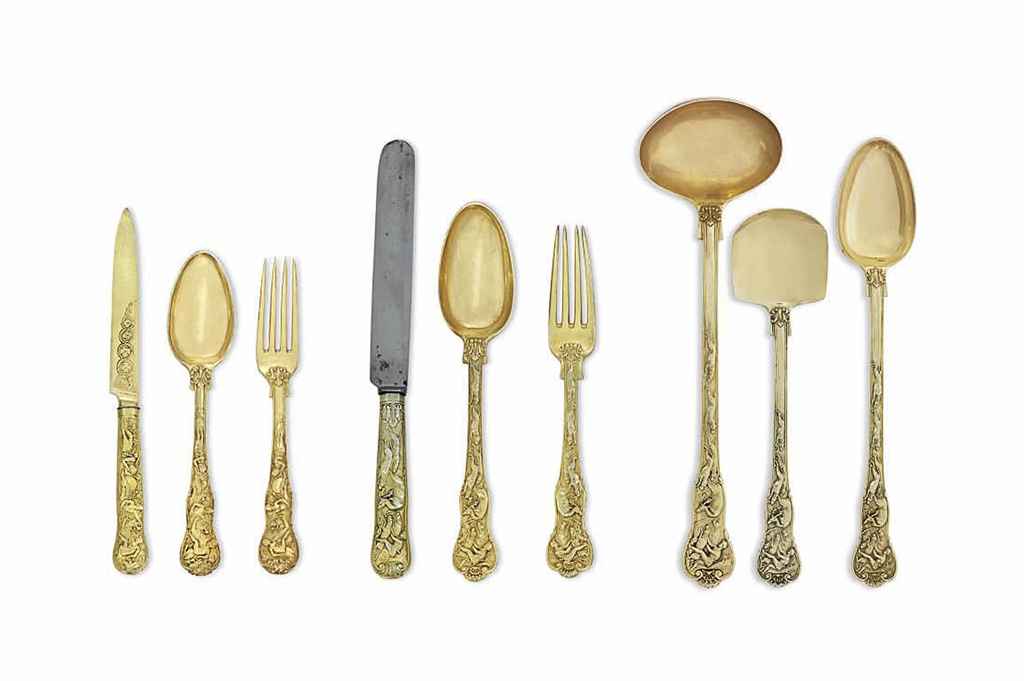

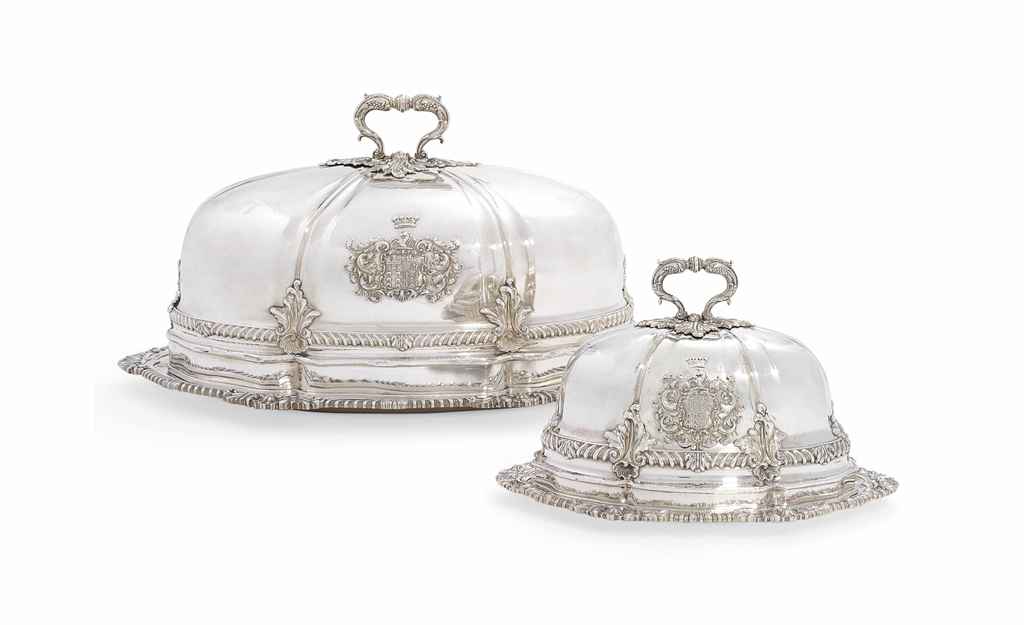
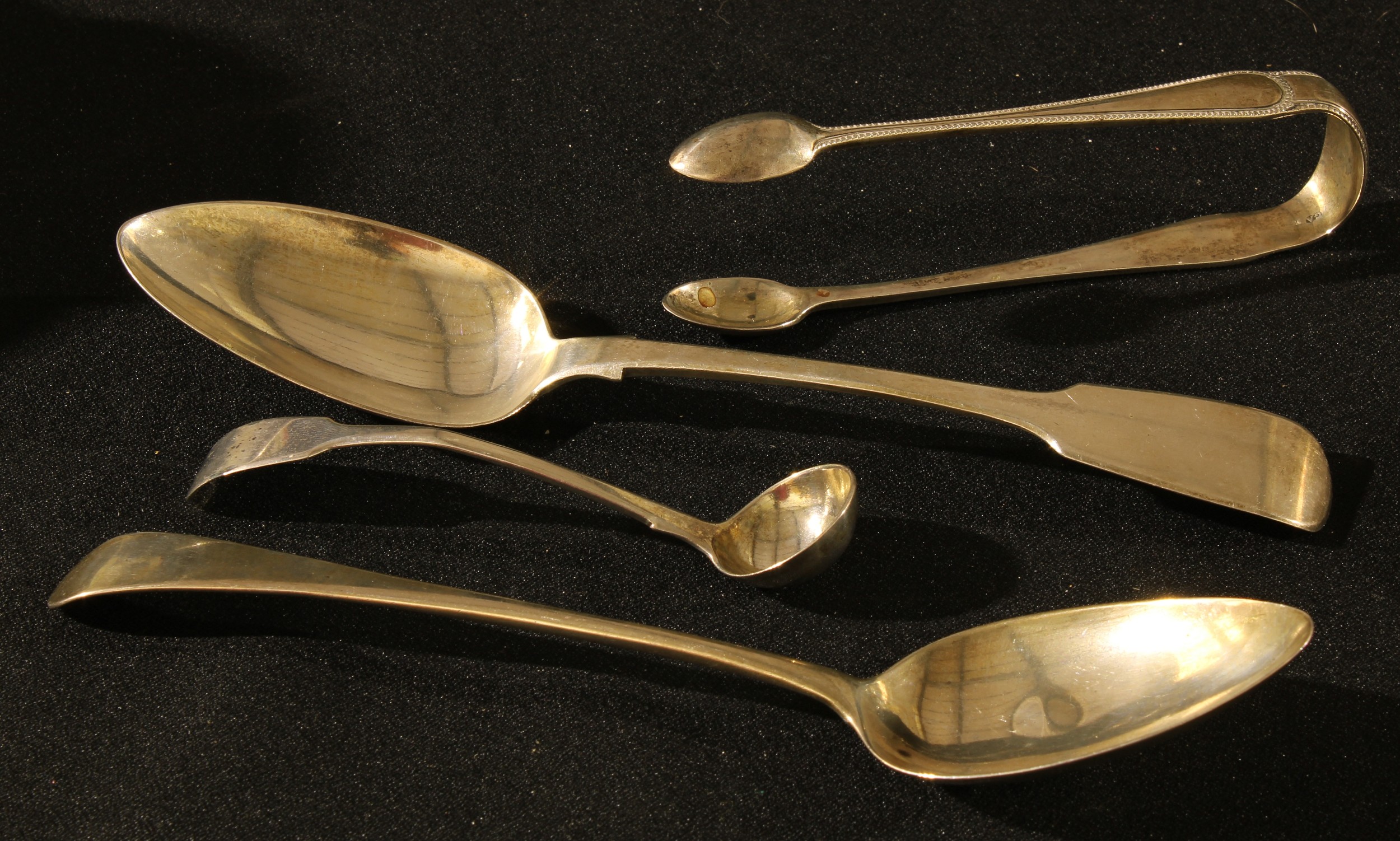
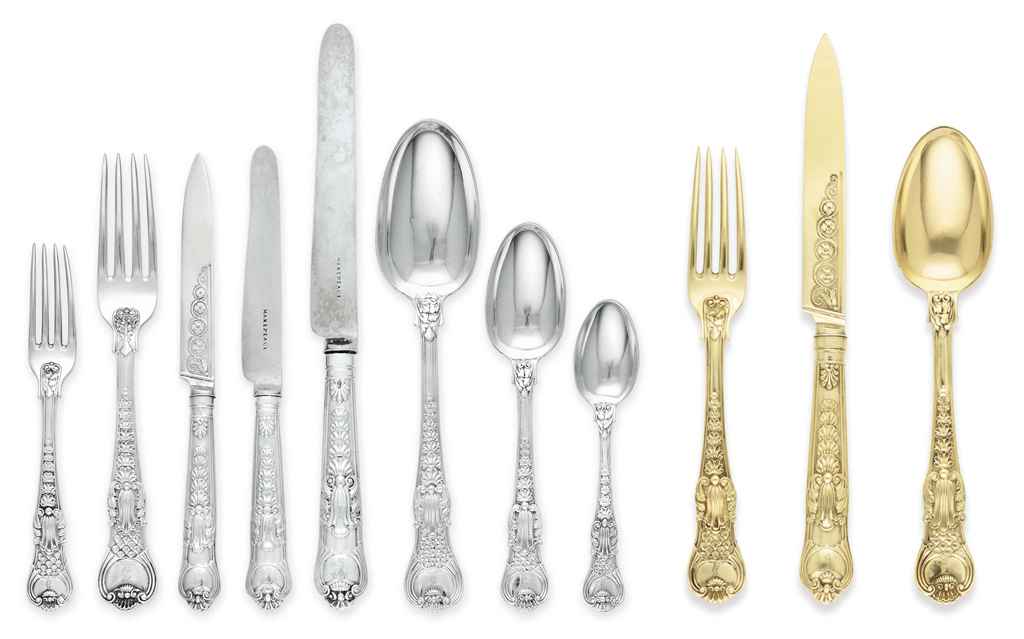
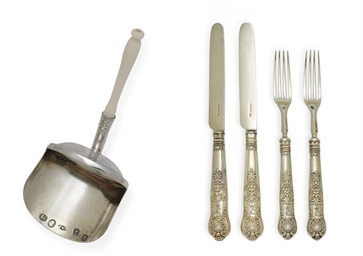

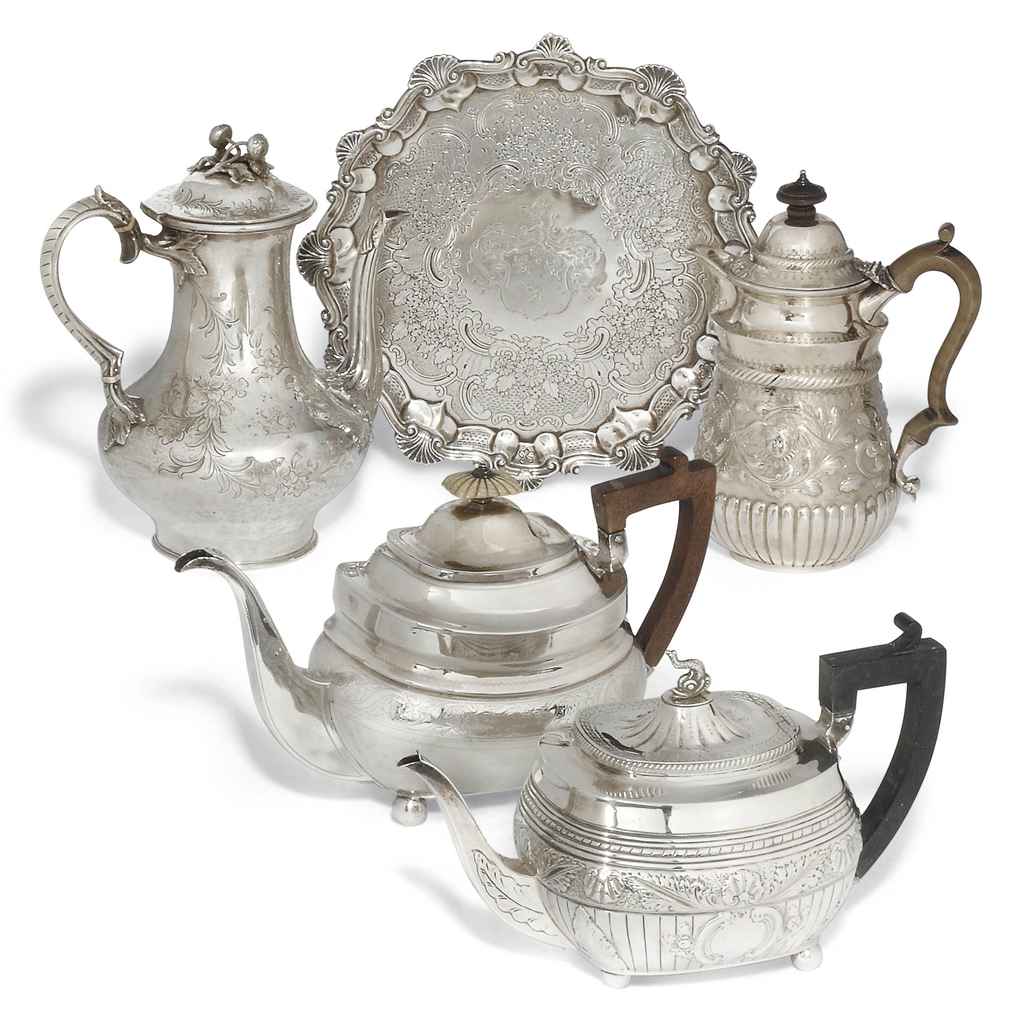
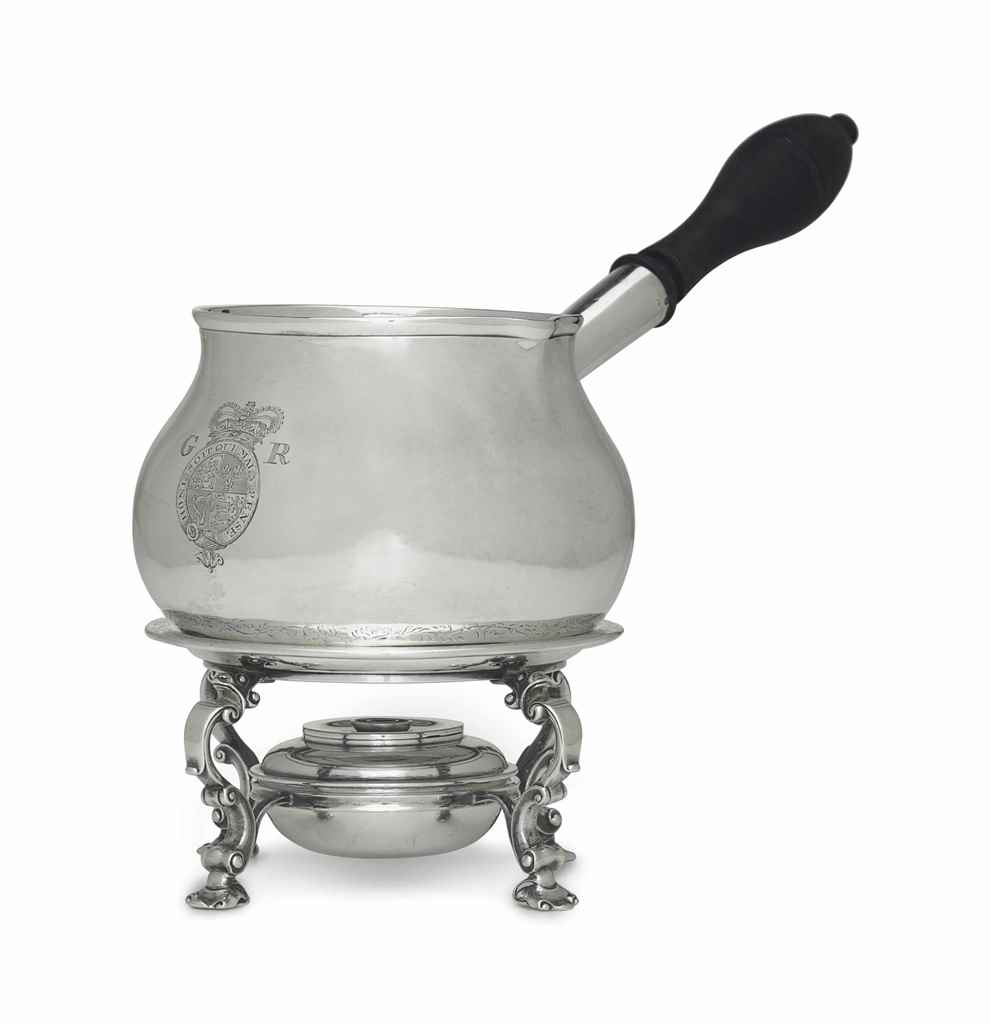





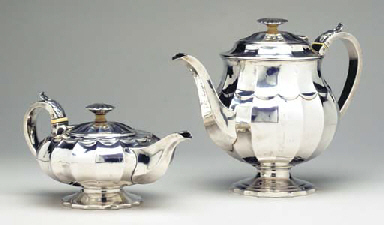
Testen Sie LotSearch und seine Premium-Features 7 Tage - ohne Kosten!
Lassen Sie sich automatisch über neue Objekte in kommenden Auktionen benachrichtigen.
Suchauftrag anlegen